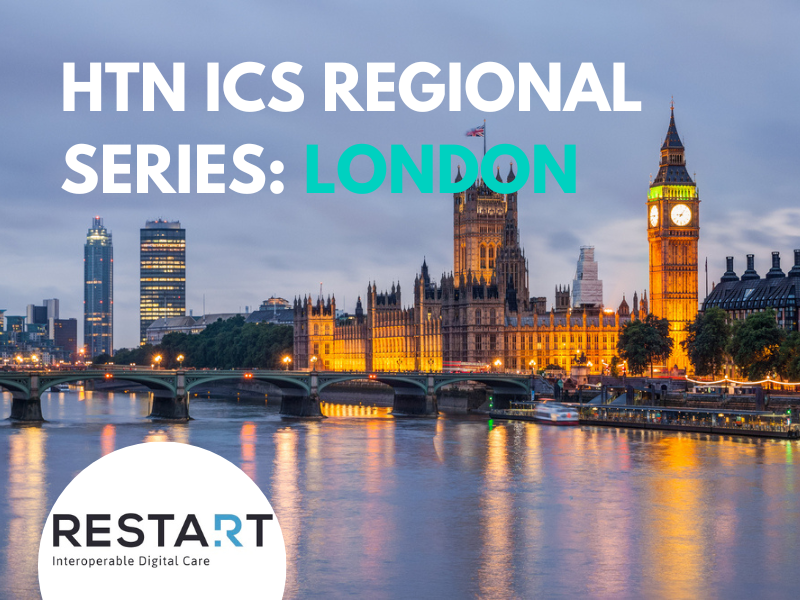
Dr Gill Gaskin, medical director for digital health at University College London Hospitals NHS Foundation Trust, shared insights into the digital landscape at UCLH.
“It has been five years since UCLH transformed into a digital hospital through implementing Epic, our fully integrated electronic health record,” Gill shared. “As research, technology, treatments, services, and indeed hospital buildings change, our digital healthcare teams continuously work with operational teams to adapt and configure the system to improve what we do for the benefit of patients and staff.
“This year, through new training and adoption communities, we will focus on enabling people to use the system even better across all areas. We want to ensure that everyone can harness the power of a fully integrated electronic health record whether this is in administration, clinical areas, research, or when access information as a patient or carer.”
A particular focus for the trust involves building on its EHR capability to facilitate clinical research studies, for example through a new approach aiming to make research a part of everyday clinical care, whilst reducing research costs and addressing clinical questions that can be difficult to answer through traditional trials. “The approach uses a computer prompt to ask a clinician making an everyday care decision – especially where there is no clear cut wrong or right answer – whether the patient should be randomised into a study or not,” Gill shared. “In one trial, researchers are assessing the feasibility of using computer prompts EHR to ask clinicians deciding on magnesium supplementation whether their patient could be randomised into a study looking at the effectiveness of liberal or restrictive approaches to magnesium supplementation. The prompt will remove the need for manual patient randomisation and consenting – patients will have consented to take part in advance – and the clinician will be able to override the prompt if preferred. This should shed light on how EHR systems can be used to deliver rigorous learning from routine clinical decision making.”
Other initiatives include a digital tool called TrialsAssistant, designed to streamline research recruitment by automatically spotting when a patient meets eligibility criteria; switching to eConsent to allow patients to review and electronically sign consent forms directly on iPads, with the form automatically timestamped and saved into the patient’s records; and improving data access for health researchers through a collaboration between University College London, with use of AI and machine learning.
Additionally, UCLH is developing a piece of software to connect to its EHR with the nationally provided GP Connect system’s API, aiming to make structured information available directly in Epic for patients’ current medications; developing a Digital Innovation Hub to “create a safe space for innovators across UCLH, UCL and third-party collaborators to work effectively together”; and investigating if AI can reduce lung cancer diagnosis times through the LungIMPACT trial, by evaluating AI tech called qXR to see if it can help reduce the time taken to diagnose lung cancer.
We also found out more about the digital work underway at Chelsea and Westminster Hospital NHS Foundation Trust from Mike Wright, innovation business partner at CW Innovation.
“There’s a lot of work happening around artificial intelligence at the moment,” Mike shared, “for example with AI technology that is designed to identify high-risk skin lesions in patients on the urgent cancer pathway. With that tech, images of the lesion can be uploaded into the cloud; the AI then looks at the lesion and deems it to be high-risk (in which case it is expedited for review and the patient may be referred for a biopsy) or low-risk, in which case the lesion might be referred on for a second look by a panel of dermatologists, pending discharge, or they might be reintroduced to the cancer pathway if needed. It helps the patient get seen and treated more quickly if they need it, and of course it’s nervewracking being on a cancer pathway, unsure if your lesion is cancerous or not; so this tech can help patients get their answer more quickly too.” Mike added that the trust has “consistently met national standards for performance over the last five or six years, with the technology helping us to achieve that. Also, that’s against rising rates of referrals – in the last five years, the volume of referrals has increased three-fold.”
Within the ophthalmology department, Chelsea and Westminster Hospital NHS FT is also trying out a voice AI to call patients. “A patient might be getting treated for cataracts – they will be referred to the service, they’ll have their cataract surgery and then ordinarily they would come into the hospital between four to six weeks after surgery for a face-to-face appointment with a nurse. We now have an AI tool that calls the patient and takes them through a conversation. If there is something of concern noted in the patient’s responses, this is flagged up to the nursing team who can then follow up.”
Mike commented on the trust’s use of the Isla image-sharing platform, which has recently been deployed in the breast care service at West Middlesex Hospital. This allows patients to submit images of their wounds and clinicians can perform remote assessments before deciding if the patient needs to come into hospital for an appointment. “It allows the patient to make better use of their time – they might not need to take a day off work to come in to hospital for an appointment, for example, and it also means that the clinical team can focus on the patients whose wounds require more attention.”
Chelsea and Westminster is also utilising e-consenting in surgical pathways, and Mike mentioned the trust’s work with communities, particularly a “very vibrant collaboration with Hounslow Council around digital inclusion and providing community members with digital technologies so that they can access trust services digitally. We are very aware of the risk of exclusion as we move more towards the digital front door approach; we have been working with a number of community groups for several years now to identify people’s experiences, what they like, what they find challenging, what do we need to do differently, and so on.”
Jeffrey Wood, deputy director of ICT at The Princess Alexandra Hospital NHS Trust, provided insight into some of their digital projects and focuses. The Princess Alexandra is working on a new electronic health record implementation, he shared, as well as a patient portal; a virtual receptionist capable of talking in multiple languages including sign language; a 5G private network; key lockers to reduce the burden on teams needing to book out keys; and device lockers for staff to collect and return laptops and other devices 24/7 without needing to wait for ICT to repair them. Additionally, the trust is working on vending machines for consumables to allow staff to quickly get hold of items such as headsets, mice and HDMI cables; multi-provider SIMS in devices for community teams; a real-time location system; and collaborating with the ICS on an elective care hub with outsourcing of pathology.
Immediate priorities over the next 12 months will be improving the end user experience to “put clinicians back in front of patients,” Jeff continued, as well as increasing the use of robotic process automation and artificial intelligence to also assist in this area. Over the next three years, he hopes to see less time “fighting fires and more time spent on innovations”, a dedicated design and development team to be “constantly evolving our use of RPA and AI”, and increased use of wearables for both staff and patients.
There needs to be “large culture change” in order to realise these ambitions, Jeff acknowledged, highlighting a need for “NHSE to get behind the need to support technology across multiple platforms and devices and encourage suppliers to diversify – for example, we recently had an NHSE-procured system set up with all the funding, and it only works on Android but we are an iOS house.”




